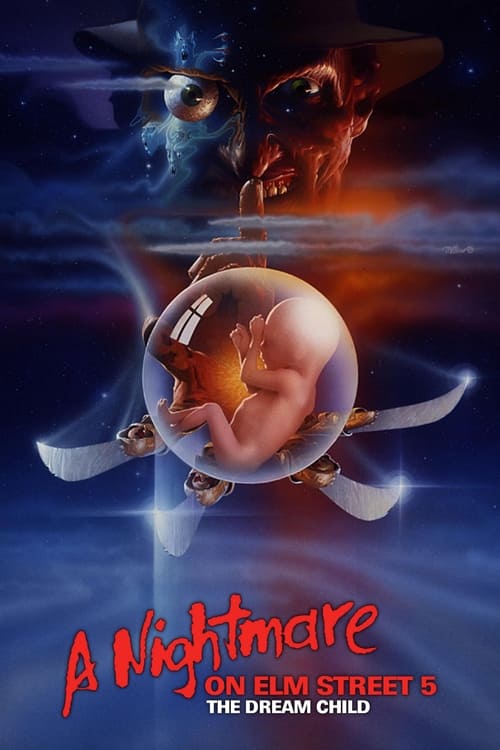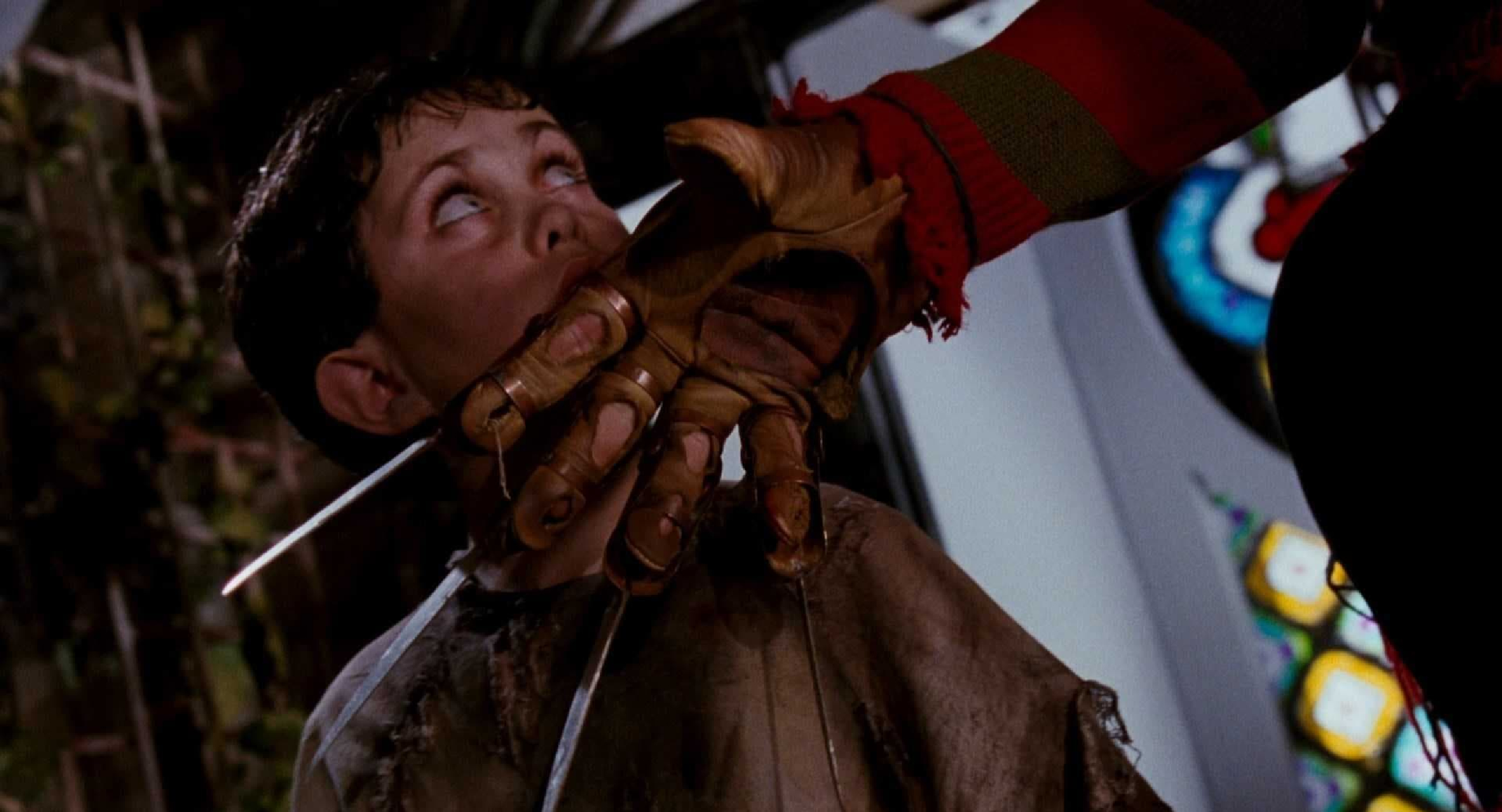Alice, having survived the previous installment of the Nightmare series, finds the deadly dreams of Freddy Krueger starting once again. This time, the taunting murderer is striking through the sleeping mind of Alice’s unborn child. His intention is to be “born again” into the real world. The only one who can stop Freddy is his dead mother, but can Alice free her spirit in time to save her own son.
Released in 1989 and directed by Stephen Hopkins, A Nightmare on Elm Street 5: The Dream Child is the fifth installment in the iconic horror franchise created by Wes Craven. As a fan of the series, I eagerly anticipated this film, hoping for more of the innovative scares and psychological horror that made the original A Nightmare on Elm Street such a classic. However, I must admit that The Dream Child fell short of my expectations in many ways.
One of the primary disappointments in this film is the departure from the series’ original formula, which blended elements of reality and dreams to create a terrifying and unique horror experience. The Dream Child leans more heavily into the dream world, but it does so in a way that feels forced and convoluted. The premise revolves around Freddy Krueger using the dreams of an unborn child, Alice, to return to the real world and continue his killing spree. While the concept has potential, it’s executed poorly, resulting in a confusing and disjointed narrative.
The film’s characters are also a letdown. Alice, played by Lisa Wilcox, is a likable protagonist, but her character lacks the depth and development of Nancy from the original film. The supporting characters are forgettable, and it’s challenging to invest in their fates. It’s worth noting that some characters from previous films in the series return, but their appearances are brief and unsatisfying, serving more as callbacks for nostalgia’s sake rather than contributing to the plot in a meaningful way.
Freddy Krueger, portrayed once again by Robert Englund, remains the highlight of the film. Englund’s performance is as charismatic and menacing as ever, and Freddy’s one-liners still deliver a dark sense of humor. However, the character’s kills in this installment lack the creativity and shock value seen in earlier films. The death scenes feel rushed and uninspired, relying too heavily on gore rather than the psychological horror that made the series stand out.
The special effects in The Dream Child are a mixed bag. While some practical effects hold up well, others have not aged gracefully. The dream sequences, which should be the film’s visual highlights, often feel like a mishmash of surreal imagery without a clear sense of purpose or narrative coherence. This lack of cohesion weakens the impact of the scares and leaves the audience feeling disconnected from the horror.
Another aspect of the film that left me disappointed was its lack of social commentary and depth. The original A Nightmare on Elm Street was praised for its exploration of teenage anxieties and the blurring of dreams and reality. In contrast, The Dream Child lacks any meaningful subtext or thematic depth. It feels like a cash-grab attempt to capitalize on the success of the franchise without offering anything new or thought-provoking.
The pacing of the film also suffers, with long stretches of exposition and character interactions that fail to engage the audience. There are moments when it feels like the story is meandering aimlessly, and the tension that should be building is instead dissipating. The dream sequences, while visually interesting at times, often feel disjointed and fail to maintain a consistent sense of dread.
One of the few redeeming qualities of The Dream Child is its atmospheric score, composed by Jay Ferguson. The music effectively enhances the film’s mood and occasionally manages to create a sense of unease even when the visuals fall short. It’s a testament to the power of a good horror movie soundtrack to elevate the viewing experience.
A Nightmare on Elm Street 5: The Dream Child is a disappointing entry in the beloved horror franchise. It suffers from a convoluted plot, underdeveloped characters, lackluster kills, and a dearth of thematic depth. While Robert Englund’s Freddy Krueger remains a highlight, his performance alone cannot save the film from mediocrity. If you’re a die-hard fan of the series, you may find some enjoyment in revisiting Elm Street, but for newcomers and casual viewers, there are far better entries in the franchise worth exploring. The Dream Child ultimately falls short of the high standards set by its predecessors and is a forgettable addition to the Elm Street saga.

